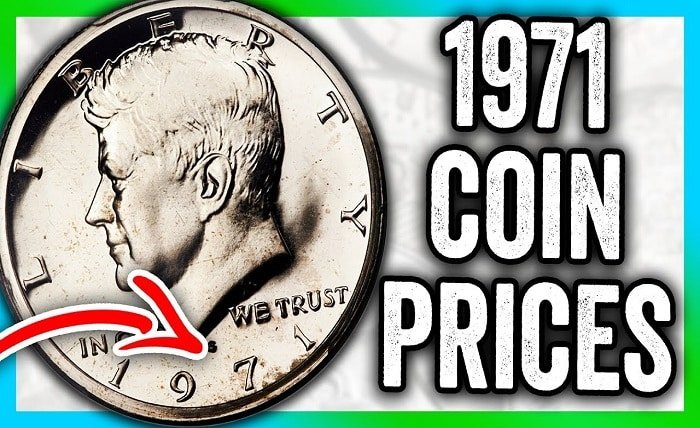Value Chart of the 1971 Half Dollar

Introduction
The 1971 half dollar is a fascinating coin for collectors and enthusiasts alike. Understanding the value chart of the 1971 half dollar involves looking into its history, the factors that influence its value, and how to assess its worth accurately. This guide will provide an in-depth look at the 1971 half dollar value chart and offer insights into making informed decisions as a collector.
History of the 1971 Half Dollar
The 1971 half dollar, part of the Kennedy Half Dollar series, holds historical significance. It was introduced to honor President John F. Kennedy following his assassination in 1963. The value chart of the 1971 half dollar reflects its cultural and historical importance, as well as its role in American numismatic history.
Design and Composition
The design and composition of the 1971 half dollar is crucial for evaluating its value. The obverse features a portrait of John F. Kennedy, while the reverse displays the Presidential Seal. The 1971 half dollar is composed of a copper-nickel clad, which differs from the silver content of earlier coins. This change affects the value chart of the 1971 half dollar significantly.
Mint Marks and Their Impact
Mint marks play a vital role in determining the value chart of a 1971 half dollar. Coins minted in Philadelphia have no mint mark, while those from Denver and San Francisco bear a “D” and “S” respectively. The value chart of the 1971 half dollar varies based on these mint marks, with certain marks being more sought after by collectors.
Factors Affecting the Value
Several factors influence the value chart of the 1971 half dollar. These include the coin’s condition, rarity, and demand among collectors. High-grade coins with minimal wear fetch higher prices. Understanding these factors can help collectors determine where their 1971 half dollar fits on the value chart.
Grading the 1971 Half Dollar
Grading is a critical process in evaluating the value chart of the 1971 half dollar. Coins are assessed based on their condition, with grades ranging from Poor (P-1) to Perfect Uncirculated (MS-70). Professional grading services can provide an accurate grade, significantly impacting the coin’s position on the value chart.
Current Market Trends
Staying updated with current market trends is essential for understanding the value chart of the 1971 half dollar. The numismatic market fluctuates based on economic conditions, collector interest, and the availability of specific coins. Regularly checking market reports can help collectors make informed decisions.
Rarity and Its Influence
Rarity is a key factor in the value chart of the 1971 half dollar. Coins with lower mintage numbers or those that have survived in better condition are typically more valuable. Understanding the rarity of different variants of the 1971 half dollar can aid in evaluating its worth.
Special Editions and Proof Coins
Special editions and proof coins have a unique place on the value chart of the 1971 half dollar. Proof coins, which are specially minted for collectors, often carry higher values due to their superior quality and limited mintage. Collectors should look out for these variants when assessing their 1971 half dollar.
Authenticity and Counterfeits
Ensuring the authenticity of a 1971 half dollar is crucial for accurate valuation. Counterfeits can significantly affect the value chart of the 1971 half dollar. Collectors should be aware of common counterfeit techniques and seek professional verification if necessary.
Selling and Buying Tips
Navigating the market for buying or selling a 1971 half dollar requires knowledge of the value chart and current trends. Tips for buying include researching market prices and purchasing from reputable dealers. For selling, understanding the value chart of the 1971 half dollar and presenting the coin accurately can help achieve a fair price.
Preservation and Storage
Proper preservation and storage are essential to maintaining the condition and value of a 1971 half dollar. Storing coins in a controlled environment, using protective holders, and handling them minimally can prevent damage and preserve their position on the value chart.
Notable Auctions and Sales
Examining notable auctions and sales provides insights into the high end of the value chart for the 1971 half dollar. Record-breaking sales highlight the potential worth of high-grade or rare variants. Collectors can learn from these examples to better understand the market.
Conclusion
The value chart of the 1971 half dollar requires knowledge of its history, design, and the factors that influence its worth. By considering mint marks, grading, rarity, and market trends, collectors can make informed decisions about their 1971 half dollar. Proper preservation and awareness of counterfeit risks further ensure the coin’s value is maintained.
FAQs
1. What factors most influence the value chart of a 1971 half dollar?
The condition, mint mark, rarity, and market demand are the primary factors influencing the value chart of a 1971 half dollar.
2. How can I determine the grade of my 1971 half dollar?
Professional grading services can provide an accurate assessment of your coin’s grade, significantly impacting its position on the value chart.
3. Are proof coins more valuable than regular 1971 half dollars?
Yes, proof coins are typically more valuable due to their superior quality and limited mintage, which places them higher on the value chart of the 1971 half dollar.
4. What should I look for to avoid counterfeits?
Authenticity features such as weight, edge design, and professional verification can help avoid counterfeits, ensuring your 1971 half dollar retains its value on the chart.
5. Where can I find reliable information on the current value chart of the 1971 half dollar?
Reputable numismatic websites, auction results, and professional coin dealers provide reliable information on the current value chart of the 1971 half dollar.





